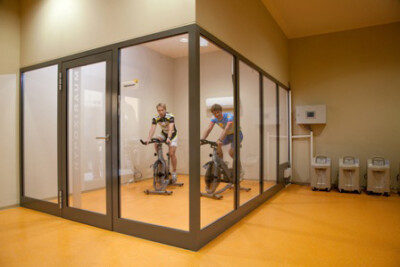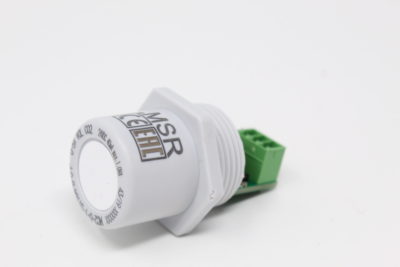Gas detection from MSR-Electronic enables safe and effective hypoxic training
Hypoxic training uses oxygen-reduced air simulating high-altitude air. Continuous gas detection is therefore particularly important in order to achieve an optimal setting of the oxygen content and to detect the formation of dangerous gases at an early stage. Originating from competitive sports, hypoxic training at altitudes of over 2000 metres is used for optimal preparation for competition.

Due to the positive effects on lung function, cardiac output and cell regeneration, high-altitude air training is also becoming increasingly important in naturopathic and therapeutic practices. As high-altitude air lowers the partial pressure of oxygen and oxygen saturation, the respiratory and heart rates as well as the number of red blood cells in the body increase.
As a result, energy production in cells and mitochondria is stimulated and performance is increased.
Höhenbalance GmbH is a leading company for innovative technologies and products as well as effective training and therapy methods in hypoxic training. To ensure maximum safety during hypoxic training in competitive sports, therapy and private use, gas sensors from MSR-Electronic are used for gas detection. This makes it possible to determine the current O2 and CO2 concentration in the training room.
How to simulate high-altitude air?
To simulate high-altitude air, oxygen-reduced air is fed into an altitude tent, a room system or a mask. Depending on the area of application, the way in which oxygen-reduced air is generated varies.

©Pixabay, domelaci
One training method at Höhenbalance GmbH, for example, is the airRoom. Here, training takes place in a room system without a mask. The larger amount of oxygen-reduced air is produced by membrane systems.
This manufacturing process is ideally suited for high-altitude lounges, high-altitude chambers and hypoxia rooms, which is why membrane systems are used in universities, research institutions and clinics all over the world.
Solutions from MSR-Electronic for safe gas detection during hypoxic training
For permanent CO2 monitoring during hypoxic training, the MC2 gas sensor with infrared sensor element is installed in the room system. The sensor with digitalised measured value processing, temperature compensation and self-monitoring is used for continuous monitoring of the ambient air for CO2.

©MSR-Electronic GmbH, MC2
In addition to the infrared sensor there is a module integrated in the sensor unit with µController, analog output with selective signal output and power supply. The IR measurement principle with integrated temperature compensation ensures highest accuracy, selectivity and reliability despite the long calibration interval.
The µController calculates a linear 4–20 mA (or 2–10 V) signal out of the measurement signal of the IR sensor and also stores all relevant measured values and data of the sensor element. Calibration is done either by simply replacing the sensor unit or by using the comfortable, integrated calibration routine directly at the system.
Technical features and benefits of the sensor
- Data / measured values in µC of the sensor unit, therefore simple exchange uncalibrated <> calibrated
- Low zero-point drift
- Sensor lifetime > 15 years (CO2)
- Software according to SIL compliant development process
- Reverse polarity protected, overload and short-circuit proof
- IP65 version
- Housing for integration of the sensor unit (option)
- Display (option)
- Display with 2 open-collector outputs for horn (resettable) and warning lamp (option)
- Duct mounting kit (accessory)
For continuous and safe O2 monitoring, the PolyGard®2 sensor MC2 (Tox) with electrochemical sensor element is employed. The sensor is used for oxygen monitoring when a classic 4-20 mA signal (or 2-10 V) is required. The monitoring for it is evaluated by the customer's installed controller system.
MSR-Austria GmbH is a cooperation partner of Höhenbalance GmbH in this exciting project.
Further details on MSR-Electronic products can be found in the Online catalog.